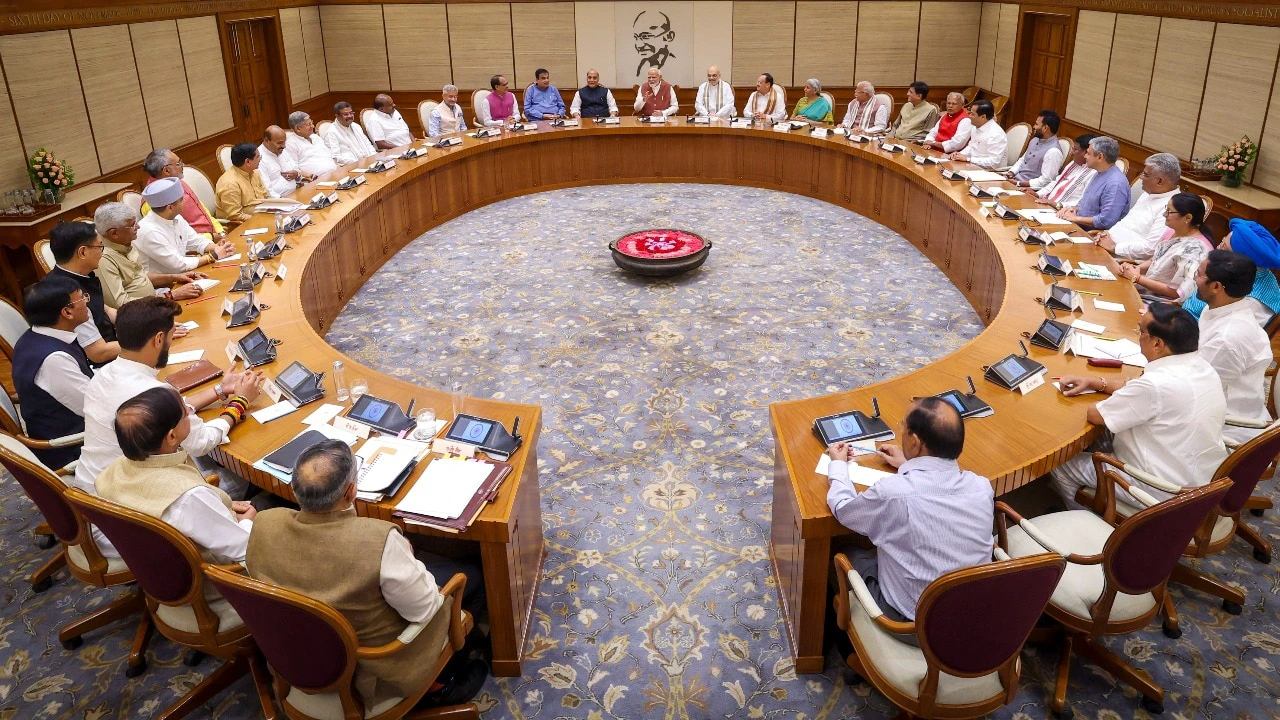
Policy continuity is likely to be the hallmark of Modi 3.0 going by the portfolios assigned to the ministers in Prime Minister Narendra Modi’s Cabinet.
Old hands have been retained in his new ministerial line-up, while space has been made to accommodate some big BJP leaders and new NDA partners.
The biggest assurance of policy continuity is the retaining of the four core ministers of defence, home, finance and foreign.
Rajnath Singh continues to be the Defence Minister and Amit Shah the Home Minister, while Nirmala Sitharaman will head the Finance Ministry and S Jaishankar the Ministry of External Affairs in PM Modi’s third term.
PM Modi took the oath of office on Sunday along with 71 ministers from the BJP and its NDA partners. There is additional pressure to accommodate alliance leaders in this government as the BJP, with 240 seats, is short of the 272-seat halfway mark.
The BJP, at the very outset, had made it clear to its alliance partners that it was going to retain the big portfolios, and that is exactly what it has done. With that, it has ensured seamless continuity, which helps in policy decisions and implementation.
Piyush Goyal continues as the Ministry of Commerce and Industry, Dharmendra Pradhan as the Minister of Education, and Hardeep Singh Puri as the Petroleum and Natural Gas Minister.
Then there is continuity in change. BJP President JP Nadda has been brought back to the Union Cabinet and given charge of the Health Ministry. Nadda was the Health Minister in Modi 1.0.
Mansukh Mandaviya, who was the health minister in Modi 2.0, has been assigned to the Ministry of Labour and Employment, and Ministry of Youth Affairs and Sports.
Youth Affairs and Sports was with Anurag Thakur, who has been dropped from the Union ministry and is likely to be given a key organisational role in the BJP.
Anurag Thakur was also heading the Information and Broadcasting Ministry, which will be helmed by Ashwini Vaishnaw.
Vaishnaw also retains the Ministry of Railways and the Ministry of Electronics and Information Technology (Meity) from Modi 2.0.
Not just Nadda, Kiren Rijiju too, returns to the Union ministry in Modi 3.0. He is the Minister of Parliamentary Affairs and Minority Affairs.
The BJP MP from Koderma, Annapurna Devi, has been appointed the Women and Child Development Minister, which was earlier helmed by Smriti Irani. The MP from Amethi lost to Congress’ KL Sharma in the 2024 Lok Sabha election.
Arjun Munda, who lost the election from Khunti, was the Tribal Affairs Minister. The ministry will now be under Jual Oram, the Vajpayee-era tribal leader from Odisha.
The BJP MP from Rajasthan, Gajendra Singh Shekhawat, also sees a change in his ministry. Earlier, the Minister of Jal Shakti, he has been allocated the Ministries of Culture and Tourism.
The Modi 3.0 Cabinet accommodates former Madhya Pradesh Chief Minister Shivraj Singh Chouhan in the role of Agriculture Minister. Chouhan transformed MP’s economy by turning around the state’s farm sector.
Haryana ex-CM Manohar Lal Khattar has been appointed to the Ministry of Housing and Urban Affairs, and Power Ministry.
Jyotiraditya Scindia, the Aviation Minister in Modi 2.0, has been assigned to the Communications Ministry and the Ministry of Development of North Eastern Region (DONER), which is for the development of the northeast region.
The Aviation Ministry has been allocated to Telugu Desam Party (TDP) leader Kinjarapu Ram Mohan Naidu.
Other than the TDP, Cabinet Ministries have also been allotted to BJP partners JDS, JD (U) and LJP.
JD(U) MP Munger Rajiv Ranjan Singh alias Lalan Singh has been allotted the Ministry of Panchayati Raj and the Ministry of Fisheries, Animal Husbandry and Dairying.
Hindustani Awam Morcha supremo Jitan Ram Manjhi has been given the charge of Micro, Small and Medium Enterprises.
Lok Janshakti Party’s Hajipur MP Chirag Paswan has been allotted the Food Processing Industries ministry, which was once held by Shiromani Akali Dal’s Harsimrat Kaur Badal before she quit in September 2020.
In all, despite accommodating most leaders and alliance partners, the core of Modi 3.0 is the same as Modi 2.0.

